While it may seem like the simplest option in any man’s wardrobe, mastering the art of how to wear a black suit requires more nuance than most realize. Whether you’re dressing for a formal event, a business meeting, or even exploring a more modern, fashion-forward take, this guide will walk you through everything you need to know to make your black suit work harder and look better every time you wear it.
1. Black suit is timeless
Few garments carry the weight of tradition and timeless elegance quite like the black suit. Its origins trace back to the 19th century, when formal wear began evolving from extravagant, colorful attire to the understated sophistication we recognize today.
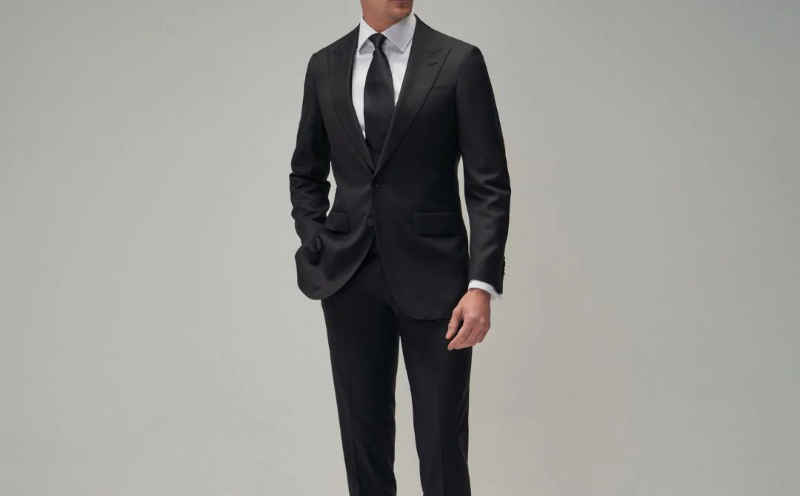
What makes the black suit endure isn’t just its aesthetic simplicity, but its remarkable versatility. Whether you’re attending a black-tie gala, a business meeting, or even a somber occasion, the black suit consistently signals respect, refinement, and attention to detail.
No matter how fashion evolves, the black suit remains a steadfast ally for any man seeking a look that’s both classic and powerful. But owning a black suit is only the first step. The real key to making it work lies in mastering the fit, because even the finest fabric can fall flat without the right tailoring. And here is how.
2. Choosing the right fit for your black suit
If there’s one golden rule in suiting, it’s this: fit is everything. No matter how luxurious the fabric or how elegant the design is, a black suit that doesn’t fit properly will never achieve its full potential and strike the right balance between comfort and sharpness.
For most modern wearers, a slim fit offers a sleek, contemporary silhouette that contours naturally to the body without feeling restrictive. However, a regular fit remains a classic option, providing a little more room through the chest and legs, ideal for those who prioritize ease of movement or prefer a traditional look.
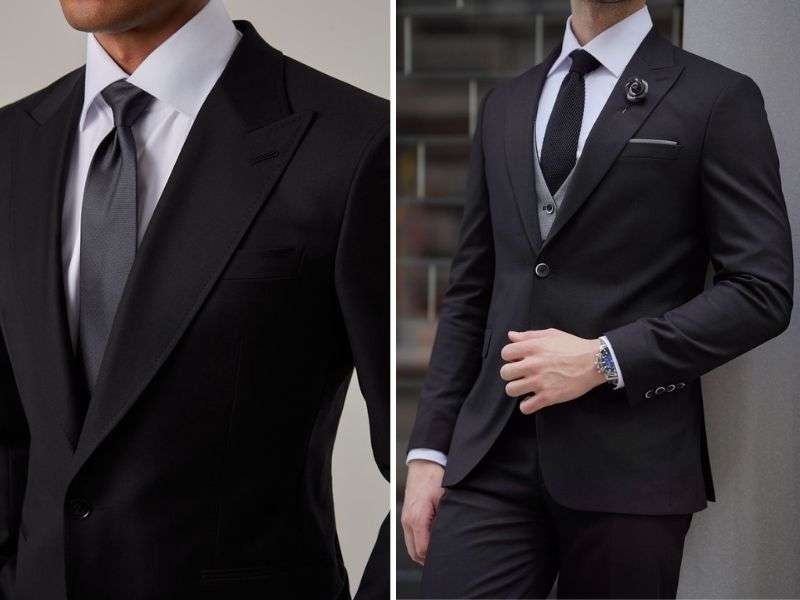
Key areas to focus on include the shoulders, which should align perfectly with your natural shoulder line. No sagging, no pinching. The jacket sleeves should reveal about half an inch of shirt cuff when your arms are relaxed, adding a polished touch. And trousers should have a slight break where the hem touches your shoes, ensuring the leg line stays clean without bunching.
Don’t hesitate to work closely with a tailor; even off-the-rack suits can transform dramatically with a few precise adjustments. A few tweaks can make a big difference.
3. Best shirt colors to pair with a black suit
The white shirt is the undisputed classic, offering sharp contrast, crispness, and working flawlessly for nearly any occasion, from weddings to boardrooms. It’s the safest and most timeless option, ensuring your black suit always looks clean and sophisticated.

For those seeking a more daring, fashion-forward vibe, the black shirt creates a sleek, monochrome look that’s especially effective for evening events or parties. This pairing exudes mystery and modernity, though it’s best kept minimal with simple accessories to avoid an overly dark, heavy appearance.

A light blue shirt is another excellent choice, offering a softer contrast that feels approachable yet polished. It brings a touch of color without straying too far from the suit’s formal roots, making it ideal for business settings or semi-formal occasions.

For a bit more creativity, subtle pastel shades like pale pink or soft grey shirts can also work, as long as the tones remain muted and the rest of the outfit stays understated.
Remember, with a black suit, the shirt acts as the anchor that sets the tone and redefines how your suit speaks.
4. What color tie works best with a black suit?
When choosing a tie to pair with a black suit, the color and pattern you select can elevate or soften your look, depending on the occasion.
For formal events, a black tie is the go-to choice. It’s the epitome of sophistication and adheres to black-tie dress codes with perfect precision. Pair it with a crisp white shirt and a satin lapel black suit, and you’ve got an ensemble that exudes timeless elegance.
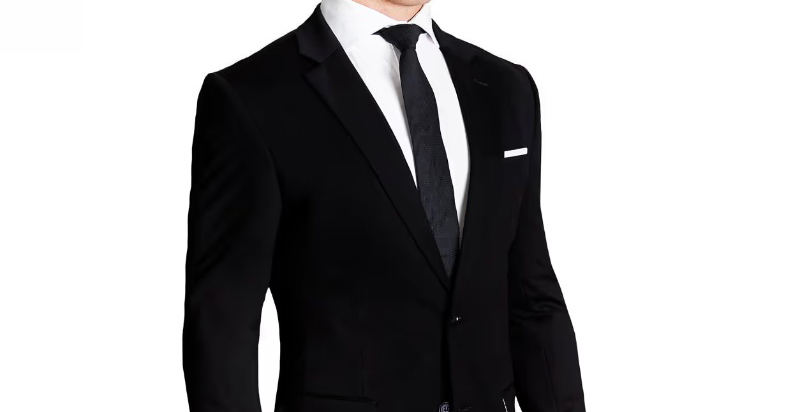
If you’re aiming for something less formal but still sharp, a grey tie is an excellent alternative. Its neutral tone complements the black suit without overpowering it, making it perfect for business meetings or semi-formal occasions.
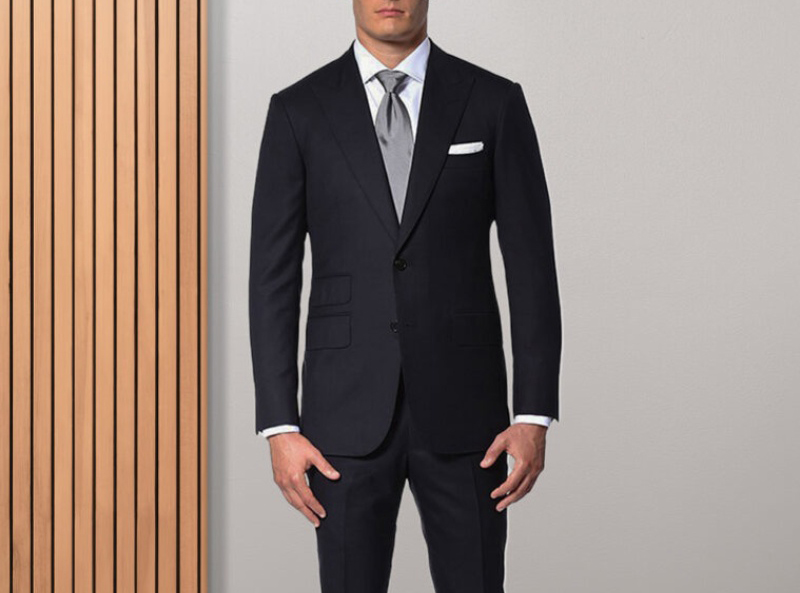
A burgundy tie is another classic choice, injecting a bit of rich color while maintaining the suit’s sharpness. Its deep red hue conveys confidence and authority, making it ideal for interviews or formal networking events.
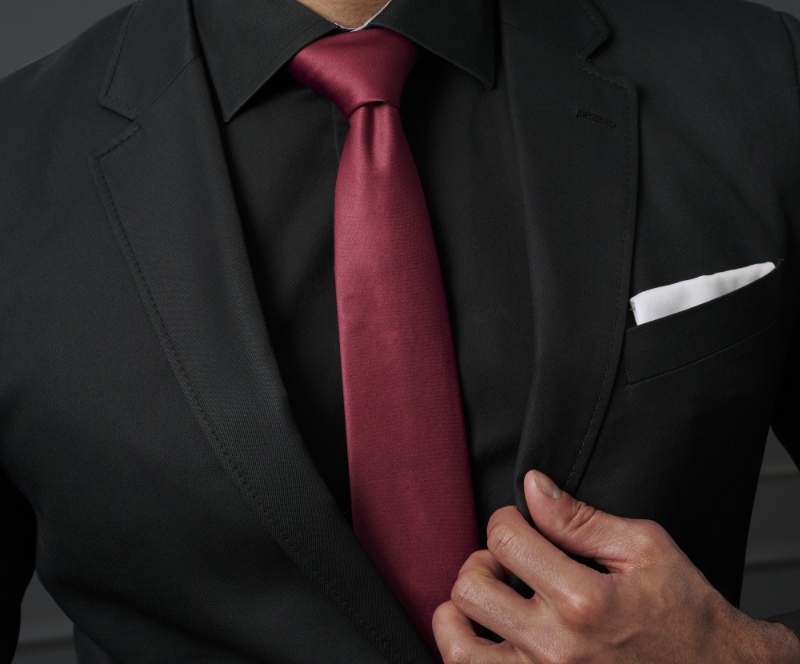
For those who prefer a bit more personality, a pattern tie like polka dot, stripe, or geometric design, adds an element of interest without clashing with the black suit’s refined structure. The key here is moderation: choose patterns that are not too bold or distracting, ensuring they complement the overall look rather than dominate it.
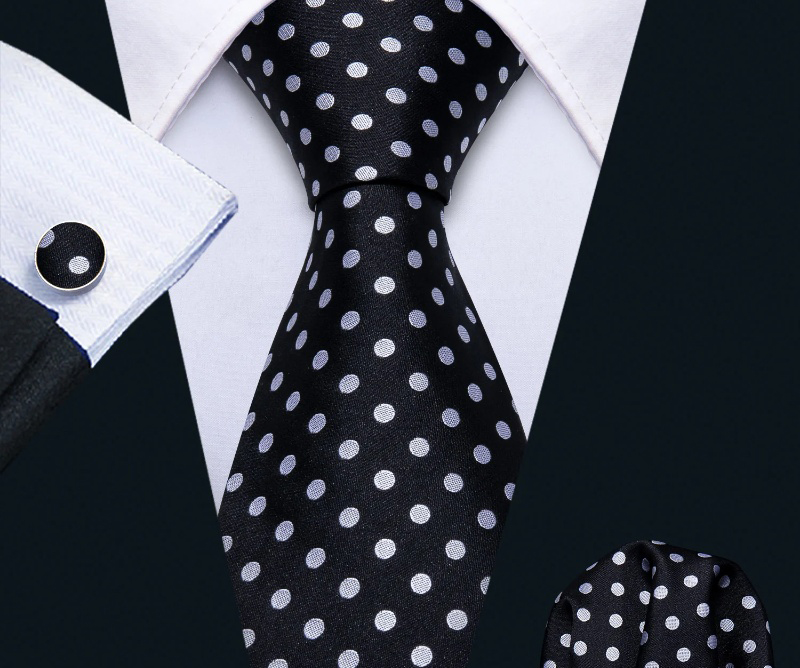
Lastly, solid color ties in deep shades like navy, dark green, or even a muted purple can offer a modern twist while staying sophisticated.
5. Shoe choices to wear with a black suit
No outfit is complete without the right pair of shoes, and when it comes to a black suit, the footwear you choose can make a large impact on your overall appearance.
Black Oxford shoes are the quintessential formal choice—sleek, polished, and elegant, they are the perfect complement to a black suit for any formal or business occasion. The clean lines and timeless design of Oxfords enhance the suit’s sharp silhouette, creating a seamless, sophisticated look.
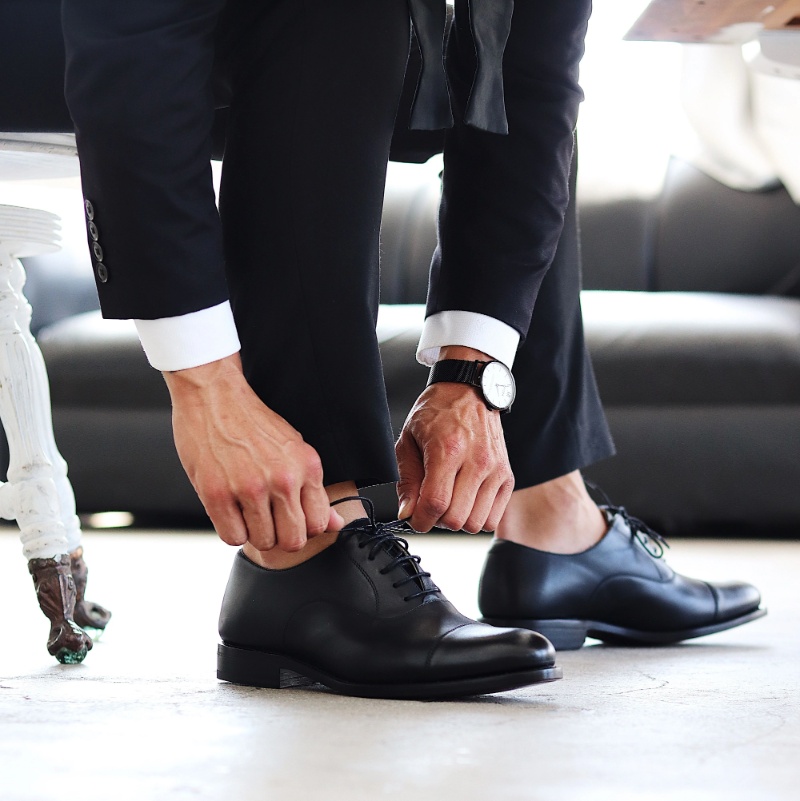
Derby shoes, while slightly less formal, are also an excellent match for a black suit. Their open-lacing design offers more comfort and flexibility, making them a great option for business settings or when you want a bit more room for movement without sacrificing style.
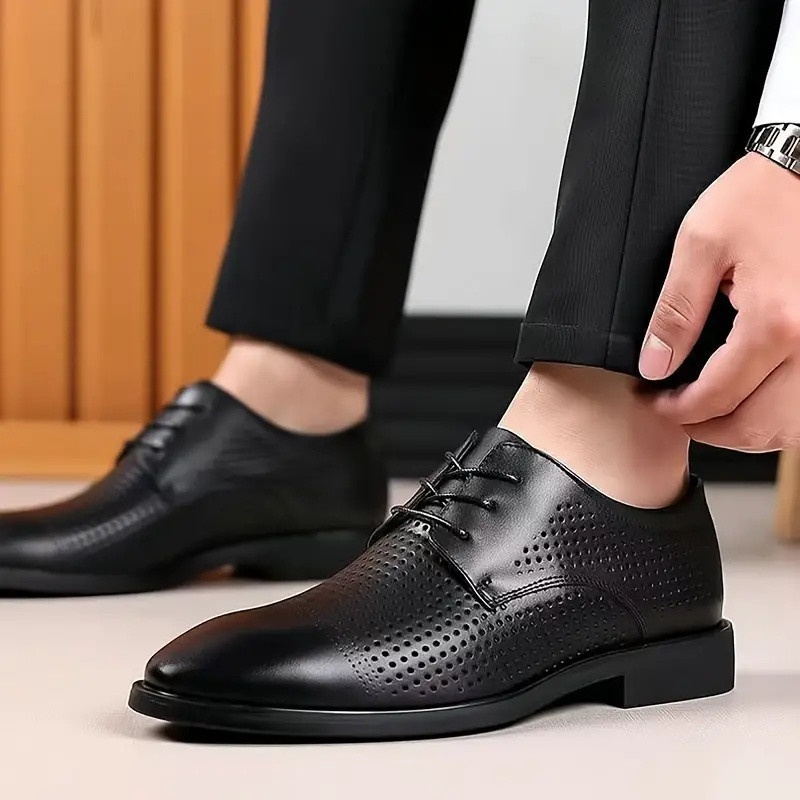
For those looking to add a touch of distinction, monk strap shoes are an increasingly popular choice. With their unique buckle fastening, monk straps bring a modern twist to the classic black suit, providing an element of flair without compromising on formality.
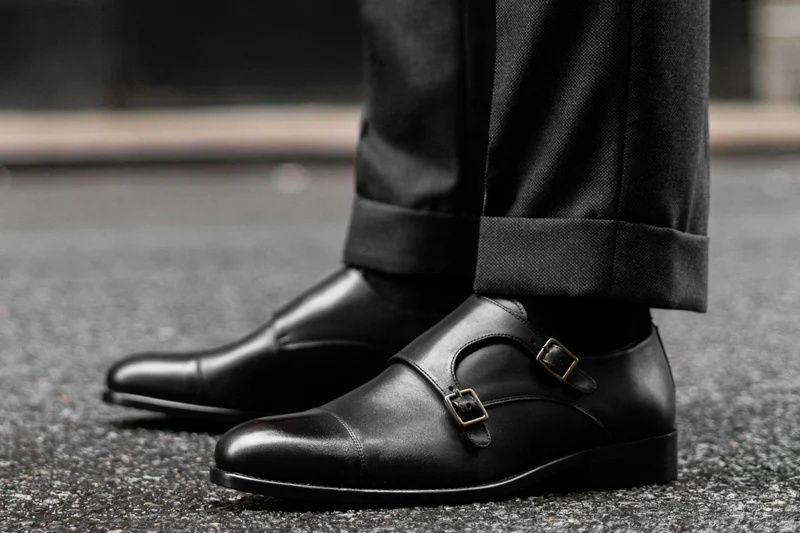
Regardless of the style, one thing remains constant: the importance of keeping your shoes well-maintained. A good shoe polish is essential for keeping your shoes looking their best, not only preserving their shine but also helping protect the leather from damage.
6. Accessories to complete the black suit outfit
When it comes to a black suit, less is more, but the details you do choose should be thoughtful and refined. A pocket square is one of the easiest ways to add personality to your ensemble while maintaining sophistication.
For formal events, a white pocket square, neatly folded in a classic puff, is a timeless option. If you’re aiming for a slightly more modern look, consider experimenting with a pocket square in a subtle pattern or rich color that complements your tie or shirt.
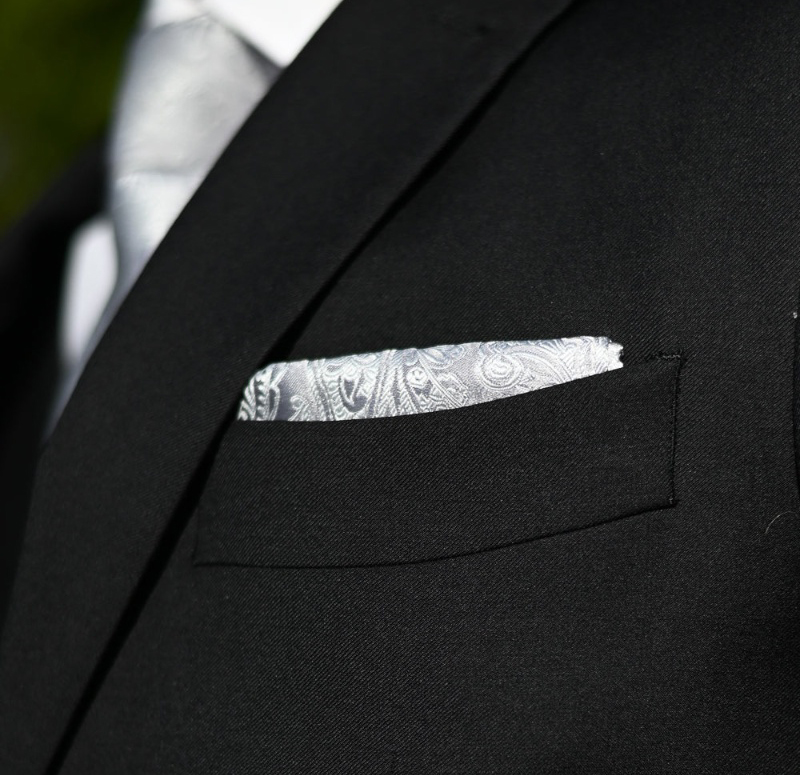
Cufflinks are another small but impactful accessory that can add a touch of class to your black suit. For formal occasions, choose silver or gold cufflinks that match your watch or other jewelry for a cohesive look. If you’re opting for a more casual twist, playful designs or unique materials, such as enamel or wood, can introduce a bit of personal flair without detracting from the overall elegance.

A watch is not only functional but also a statement piece. A classic leather strap watch in black or brown pairs beautifully with a black suit, adding a refined element of sophistication. Avoid large, bulky watches and opt for something sleek and understated to maintain balance.
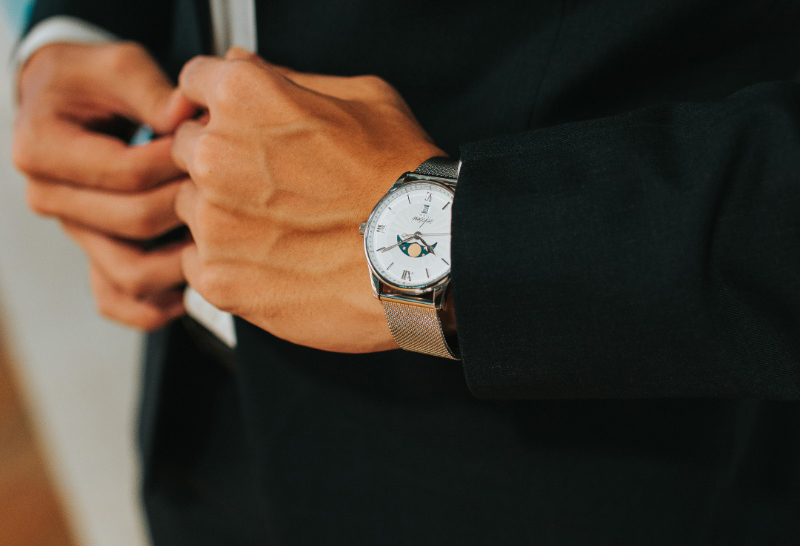
A belt in black leather, matched with your shoes, should also be part of the look, but it’s important to keep it simple—no flashy buckles or unnecessary embellishments.
Finally, subtle jewelry such as a tie bar or a discreet ring can enhance your outfit, but always remember to keep it minimal. The key to accessorizing with a black suit is to ensure that every piece enhances the overall aesthetic without overpowering it.
7. How to style a black suit for the right occasions
When styled thoughtfully, the black suit’s adaptability transitions effortlessly from formal to business to smart-casual settings.
For formal events and black tie affairs
It’s essential to distinguish between a standard black suit and a true tuxedo. While both serve a dressy purpose, the tuxedo typically features satin lapels, satin-covered buttons, and is traditionally paired with a crisp white dress shirt, bow tie, and patent leather shoes.
If you’re wearing a black suit in a black-tie setting, keep it as sleek and classic as possible: opt for a solid black silk tie, a pressed white pocket square, and highly polished black oxfords to maintain that formal integrity.

For business settings
The black suit becomes a symbol of authority and precision. The formula here leans more conservative: a well-pressed white dress shirt, a medium-width tie in subtle shades like navy or burgundy, and a pair of black Oxford or derby shoes create a polished, no-nonsense look.
Make sure your accessories, like your watch, belt, and cufflinks, are understated and cohesive. This isn’t the place for bold experimentation; rather, it’s about projecting professionalism and reliability.
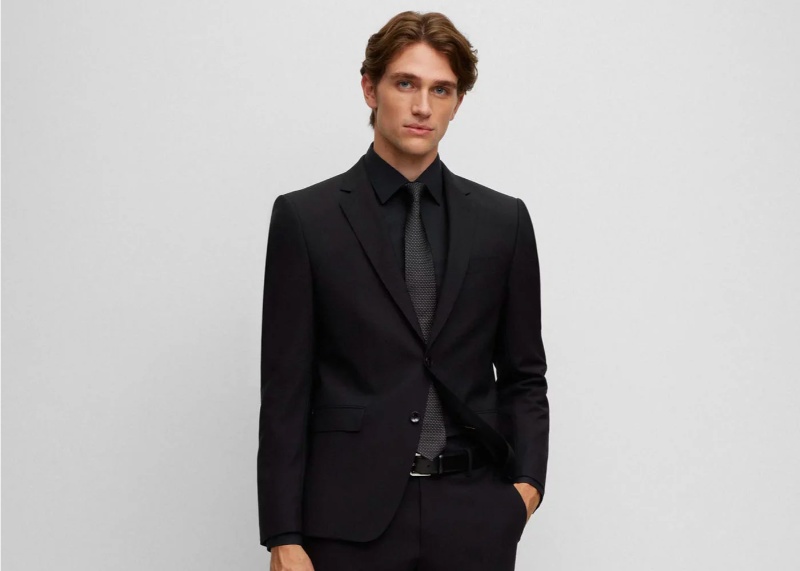
For casual or modern takes
The black suit offers surprising flexibility. You can dial down the formality by pairing it with a fine-gauge turtleneck, a crewneck sweater, or even a sleek polo. Ditch the tie for a minimalist vibe and consider loafers or minimalist sneakers for a relaxed finish.
Rolling up the jacket sleeves slightly or mixing in different textures—like a knit shirt or suede footwear—can also introduce a contemporary edge. This approach keeps the black suit relevant and stylish without feeling overdressed, making it a versatile player in any modern wardrobe.
8. How to wear a black suit for every season
A black suit can be worn throughout the year, but paying a little thought into the texture, weight, and breathability of your suit can ensure you stay comfortable and stylish no matter the weather.
In warmer months, comfort is key. Opt for lightweight wool or linen blends that offer breathability without compromising on style. Lightweight wool, in particular, is an excellent choice for summer. Its moisture-wicking properties and natural breathability make it suitable for staying cool while still maintaining the sleek, polished look of a black suit.

Additionally, fabrics like flannel can be too heavy for the summer heat, so it’s best to avoid them unless you plan on moving into the cooler evenings or air-conditioned settings.
In contrast, during the colder months, a thicker fabric such as flannel or heavier-weight wool provides the warmth and insulation needed. These fabrics are also great for layering—add a well-tailored vest or a sophisticated scarf to keep warm while enhancing the overall look.
During the winter, you can also experiment with textures like tweed or corduroy, which add depth and richness to your black suit ensemble. Just be sure to choose fabrics that still maintain structure and don’t appear too bulky. When layering, keep the proportions in mind: a well-fitted wool suit can easily be paired with a thin cashmere sweater or a tailored overcoat without losing its sharp silhouette.

In the end, mastering how to wear a black suit is all about balance, honoring its classic roots while tailoring it to your personal style and the occasion at hand. Whether you keep it traditional or experiment with textures and colors, the black suit remains a powerful canvas for self-expression. Pay attention to fit, fabric, and the finer details, and you’ll find that this timeless piece doesn’t just serve you well.
Create from my passion about sartorial that I accidently discover when I was searching to upgrade my style, this website is dedicated to providing in-depth knowledge, expert styling tips and the latest trends in men’s tailored fashion. Though sometimes I might sound a little cheesy cuz of all that philosophy book I’ve read 🙂
